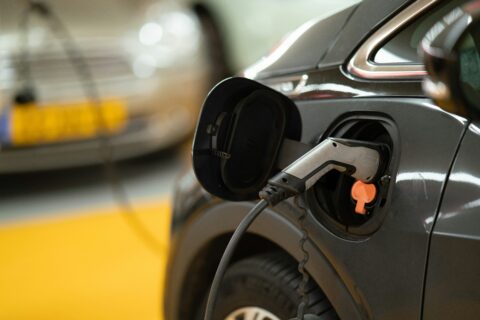Introduction to Transportation
The world of transportation has come a long way from the days of horse-drawn carriages and steam-powered locomotives. As humans, we have always had an inherent desire to explore new horizons and connect with one another, and transportation has played a pivotal role in making that possible. From the Industrial Revolution to the rise of modern automobiles, our modes of transportation have evolved at an astonishing pace. Now, we stand on the brink of a revolutionary breakthrough – the Hyperloop. In this blog post, we will delve into the captivating story of transportation’s evolution and uncover what lies ahead on this thrilling journey! So fasten your seatbelts (or should I say magnetic levitation belts?) as we embark on this exhilarating ride through time!
A Brief History of Transportation
Transportation has come a long way since the dawn of human civilization. In ancient times, people primarily relied on their own two feet to get from one place to another. However, as societies grew and trade became more important, humans began devising new ways to move themselves and goods across longer distances.
The first major development in transportation was the invention of the wheel around 3500 BCE. This revolutionary innovation allowed for faster and more efficient movement of people and goods. With the wheel came carts pulled by animals such as horses or oxen, marking the birth of horse-drawn carriages.
Fast forward to the 18th century when steam power revolutionized transportation once again. The steam engine paved the way for locomotives that could pull heavy loads over long distances at previously unimaginable speeds. Railways became a crucial part of industrialization, connecting cities and facilitating trade on a massive scale.
In parallel with advancements in railways, ships were also undergoing significant transformations during this time period. Steam-powered ships replaced sailboats, making ocean voyages faster and more reliable than ever before.
The late 19th century brought about yet another groundbreaking development: automobiles powered by internal combustion engines. These horseless carriages offered individuals newfound mobility and independence like never before.
As we moved into the 20th century, aviation took flight – literally! The Wright brothers’ successful airplane flight in 1903 opened up a whole new world of possibilities for air travel. Over time, airplanes evolved from rickety contraptions into sophisticated machines capable of carrying hundreds of passengers across continents within hours.
Today, transportation continues to evolve at an astonishing pace. We’ve witnessed advancements such as electric cars reducing reliance on fossil fuels and self-driving vehicles promising safer roads ahead.
Looking back at our history reveals how far we’ve come in terms of transportation technology – from humble beginnings relying solely on leg power to now having hyperloop technology potentially revolutionizing how we travel. It’s a testament to human ingenuity and our constant quest for
The Impact of the Industrial Revolution on Transportation
The Industrial Revolution, which spanned from the late 18th to the early 19th century, brought about a significant transformation in various sectors, including transportation. This era marked a shift from traditional methods of transportation to more efficient and advanced systems.
One of the most noticeable impacts of the Industrial Revolution on transportation was the development of steam-powered locomotives. These iron giants revolutionized travel by enabling faster and more reliable journeys across land. Railways expanded rapidly during this period, connecting cities and facilitating trade and communication like never before.
In addition to rail transport, advancements in engineering also led to improvements in water transportation. Steamships replaced sailing vessels as a primary means of long-distance travel and shipping goods across oceans. The introduction of canals further enhanced connectivity between different regions.
Furthermore, the availability of machinery powered by coal allowed for mass production in industries such as textiles and manufacturing. This increase in production demanded an efficient system for transporting raw materials and finished products. Consequently, modes such as horse-drawn carriages were gradually replaced by railways for transporting goods over long distances.
The impact on society was profound – with faster transportation options becoming available, people could now travel greater distances for work or leisure. This increased mobility not only facilitated urbanization but also contributed to cultural exchange between different regions.
It is evident that the Industrial Revolution played a crucial role in shaping modern transportation systems we rely upon today. It introduced new technologies that improved efficiency, speed, and connectivity across various modes of transport – setting the stage for further advancements in future years
Advancements in Transportation Technology
Advancements in Transportation Technology
Over the centuries, transportation has undergone remarkable transformations. With each passing era, technological innovations have played a key role in revolutionizing how we move from one place to another. From humble beginnings with horse-drawn carriages to the cutting-edge concepts like hyperloop, transportation technology continues to evolve at an astonishing pace.
The invention of steam engines marked a significant milestone in the advancements of transportation technology. The steam engine powered locomotives that were faster and more efficient than traditional means of transport. It enabled the establishment of railway networks that connected cities and facilitated long-distance travel on land.
In the late 19th century, another groundbreaking innovation took place with the invention of automobiles. The development of internal combustion engines and mass production techniques paved the way for cars to become accessible to a wider population. Automobiles quickly became synonymous with freedom, convenience, and personal mobility.
As time went on, further advancements brought about electric vehicles (EVs) as an alternative mode of transportation. EVs offer numerous benefits such as reduced emissions and lower operating costs compared to traditional gasoline-powered vehicles.
Moreover, recent years have witnessed tremendous progress in autonomous vehicle technology – self-driving cars capable of navigating without human intervention. Companies like Tesla have made significant strides towards making autonomous driving a reality by integrating advanced sensors and artificial intelligence into their vehicles.
Additionally, aviation has seen remarkable advancements since its inception. From rudimentary propeller planes to supersonic jets capable of crossing continents within hours – air travel has transformed how people explore our planet.
Transportation technology is not limited only to land or air; it extends beneath our feet through underwater tunnels connecting islands or countries together—an ingenious solution for overcoming geographical barriers while ensuring connectivity between regions.
In conclusion,Breakthroughs in transportation technology continue unabatedly as researchers strive towards developing new sustainable forms of transport such as hyperloop systems that promise unparalleled speed and efficiency. As we look ahead into the future, it is clear that transportation will continue to evolve, and our world will become
The Rise of Cars and Automobiles
The rise of cars and automobiles marked a significant shift in the history of transportation. With their ability to provide personal mobility, cars revolutionized the way people traveled and transformed society as a whole.
During the late 19th century, several inventors made notable contributions to automotive technology. Karl Benz is often credited with creating the first practical automobile, while Henry Ford’s assembly line production techniques played a crucial role in making cars more affordable for the masses.
As car ownership became more widespread, cities began adapting their infrastructure to accommodate this new mode of transportation. Roads were built or improved, traffic regulations were established, and gas stations popped up on street corners.
Cars offered convenience and freedom like never before. They allowed people to travel longer distances in less time and explore areas that would have been difficult to reach by other means. Commuting became easier, enabling urban sprawl as people could live further away from city centers.
However, along with these benefits came challenges. Increased reliance on vehicles led to congestion on roads and contributed to pollution levels rising across the globe. The need for fossil fuels also raised concerns about sustainability and climate change.
Nonetheless, advancements continue to be made in car technology aimed at mitigating these issues. Electric vehicles are becoming increasingly popular due to their lower carbon emissions compared to traditional gasoline-powered cars.
Additionally, autonomous vehicles are being developed that have the potential not only to reduce accidents but also optimize traffic flow through smart coordination systems.
Looking ahead, it is clear that cars will continue evolving alongside other modes of transportation such as public transit systems and cycling infrastructure. As we strive for greener solutions and better connectivity between different forms of transportationsystems , it remains important that we carefully consider how our choices impact both individualsand societyas a whole
Alternative Modes of Transportation
Alternative Modes of Transportation
As the world continues to evolve, so does our need for efficient and sustainable modes of transportation. While cars and airplanes have dominated the landscape for decades, alternative modes of transportation are gaining momentum as people seek greener and more innovative options.
One such alternative is cycling. Bicycles offer a cost-effective way to navigate through congested cities while reducing carbon emissions. With bike-sharing programs popping up in major cities around the globe, cycling has become an accessible and convenient choice for short distance travel.
Another alternative mode of transportation that’s been making waves is electric scooters. These compact vehicles are perfect for zipping through urban areas without worrying about parking or fuel costs. Electric scooters also produce zero emissions, making them an eco-friendly option.
For longer distances, trains remain a popular choice among travelers looking to avoid the hassle of airports and highways. High-speed trains not only provide comfort but also reduce travel times significantly. Some countries have even implemented maglev (magnetic levitation) technology, allowing trains to reach mind-boggling speeds.
Moving away from land-based alternatives, we can’t forget about water transport. Ferries offer a scenic way to cross bodies of water while reducing traffic congestion on roads and bridges. Additionally, riverboats provide tourists with a unique perspective on cities built along rivers or coastlines.
Let’s not overlook walking! The simplest form of transportation requires only our two feet but offers numerous health benefits as well as being environmentally friendly. Walking promotes physical activity while decreasing pollution levels caused by motorized vehicles.
The world is embracing these alternative modes of transportation more than ever before due to their sustainability and efficiency advantages over traditional methods like cars or planes.
The Emergence of Hyperloop Technology
The Emergence of Hyperloop Technology
In recent years, there has been a buzz surrounding the emergence of an innovative transportation technology known as the Hyperloop. This futuristic concept, first proposed by Elon Musk in 2013, aims to revolutionize the way we travel by combining elements of air travel and high-speed rail.
So what exactly is the Hyperloop? Well, imagine traveling inside a sleek passenger pod that moves through a near-vacuum tube at speeds exceeding 700 miles per hour. Sounds like something out of a science fiction movie, right? But believe it or not, this revolutionary mode of transportation may soon become a reality.
The idea behind the Hyperloop is simple yet groundbreaking. By eliminating air resistance and friction typically associated with traditional modes of transportation, such as cars or trains, the Hyperloop could potentially transport passengers faster than any other existing method.
One key advantage of this technology is its potential for long-distance travel with minimal time investment. Imagine being able to commute from one city to another in mere minutes rather than hours! This would not only save valuable time but also have significant implications for business and tourism industries alike.
Moreover, proponents argue that the implementation of Hyperloop systems could help alleviate traffic congestion in urban areas by providing an efficient alternative to conventional transportation methods. With its ability to transport both people and goods at high speeds, this technology has garnered attention from governments and investors worldwide.
However, despite its promises and potential benefits, there are several challenges that need addressing before we can fully embrace this new form of transportation. Safety concerns related to operating at incredibly high speeds within confined spaces remain one crucial aspect that must be carefully examined and resolved.
Additionally, cost considerations pose another obstacle towards widespread adoption. The construction costs involved in building an extensive network of tubes across vast distances could be substantial. Finding funding solutions will be essential if we want to see this transformative technology become accessible on a global scale.
While these challenges may seem daunting, it’s important to remember that every great innovation faced skepticism and
Potential Benefits and Challenges of Hyperloop
The potential benefits of Hyperloop technology are vast and exciting. One of the most notable advantages is its ability to drastically reduce travel time. With speeds potentially reaching up to 700 miles per hour, a journey that would typically take hours can be completed in mere minutes.
Another benefit is its environmental impact. Unlike traditional modes of transportation that rely on fossil fuels, Hyperloop systems are powered by renewable energy sources such as solar power. This means reduced carbon emissions and a smaller ecological footprint.
Hyperloop also has the potential to revolutionize logistics and freight transportation. With its high-speed capabilities, it could significantly improve supply chain efficiency, enabling faster delivery times for goods across long distances.
However, there are challenges that need to be addressed before Hyperloop becomes a widespread reality. One major challenge is the cost associated with building the infrastructure required for these systems. The construction of tunnels and stations can be expensive, requiring substantial investments from governments or private entities.
Additionally, safety concerns must be thoroughly addressed to ensure passenger confidence in this new mode of transportation. Extensive testing and regulations will need to be implemented to guarantee the reliability and security of Hyperloop systems.
While there are hurdles to overcome, the potential benefits of Hyperloop technology make it an intriguing prospect for transforming transportation as we know it. With continued research and development efforts, we may soon witness the dawn of a new era in travel.
Future of Transportation: What’s Next?
Future of Transportation: What’s Next?
As we look ahead to the future, it is clear that transportation will continue to evolve and transform our lives in unimaginable ways. The advancements in technology have opened up new possibilities and sparked innovative ideas that could revolutionize how we travel.
One exciting concept that holds great promise is autonomous vehicles. Self-driving cars are already being tested on roads around the world, with the potential to improve road safety, reduce traffic congestion, and increase efficiency. Imagine a future where you can sit back and relax while your car takes you to your destination without any human intervention.
Another intriguing development is the rise of electric vehicles (EVs). With concerns over climate change and air pollution becoming more pressing, EVs offer a greener alternative to traditional gasoline-powered cars. As battery technology continues to improve, range anxiety will become a thing of the past, making electric vehicles even more viable for everyday use.
Additionally, there has been growing interest in alternative modes of transportation such as bicycles and scooters. These micro-mobility options present an environmentally friendly way to navigate through congested urban areas while promoting physical activity.
And then there’s the hyperloop – a revolutionary high-speed transportation system that could dramatically reduce travel times between cities. By utilizing low-pressure tubes and magnetic levitation technology, hyperloop pods would be able to reach incredible speeds while minimizing friction and energy consumption.
However, despite its immense potential, there are still many challenges that need to be overcome before hyperloop becomes a reality. Issues such as regulatory frameworks, infrastructure requirements, safety concerns, and cost feasibility must be carefully addressed for widespread adoption.
In conclusion (without using those exact words), it is evident that transportation has come a long way since horse-drawn carriages roamed our streets. From steam engines powering locomotives during the Industrial Revolution to self-driving cars roaming our highways today – each era has brought its own set of transformative changes.
As we stand at the cusp of another transportation revolution, it is exciting to







